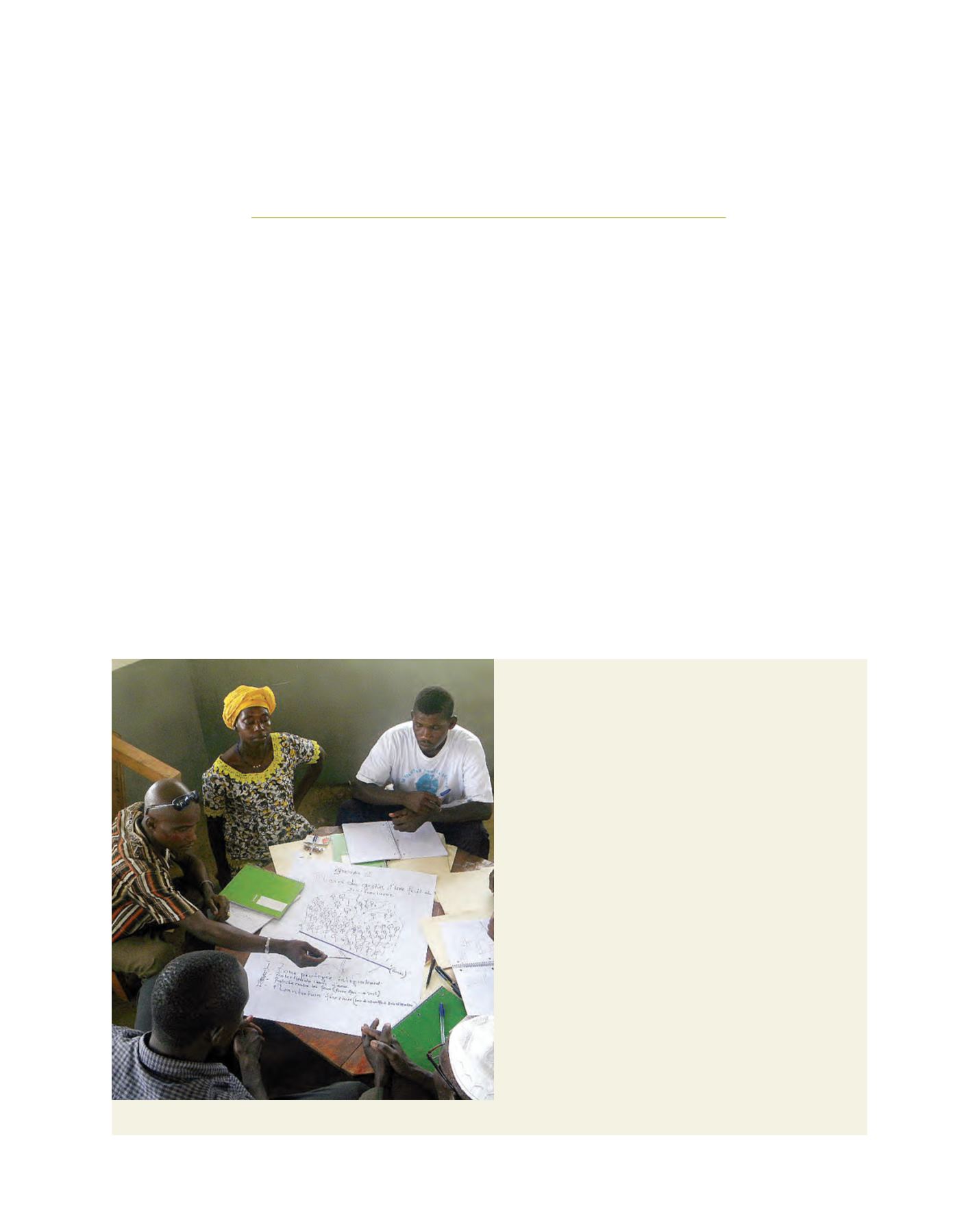

[
] 211
United States support for forests
and people around the world
Thomas L. Tidwell, Chief of the US Forest Service, US Department of Agriculture
I
n the early 20th century, visionary conservationists from
around the world recognized the need for global partner-
ships to address common forestry concerns. In 1926, a
World Forestry Congress in Rome initiated a series of global
conferences that continue to this day, with strong United States
support. The impacts of ecosystem and biodiversity loss or
mismanaged resources in one country often reverberate through-
out the world, manifesting themselves in many ways – global
conflict, environmental refugees, market distortions, increasing
global poverty and loss of species. Rapid globalization in the
20th century, trade, population growth and climate change have
increased the need for cross-boundary cooperation in anticipat-
ing emerging conservation challenges.
Through global partnerships, the United States has long worked
for sustainable global forest management and biodiversity conser-
vation, supporting efforts in more than 90 countries.
The lead Federal agency for forestry in the United
States is the US Department of Agriculture (USDA)
Forest Service. Much of its work in other countries
is funded through the US Agency for International
Development (USAID) and the US Department of
State. USDA Forest Service researchers and land
managers draw on more than a century of experi-
ence in dealing with US forests, which constitute
the world’s fourth largest forest estate, with forest
types ranging from boreal to tropical. They work
with global partners on issues such as forest health,
invasive species, rangeland management, forest
economics, policy analysis, and disaster response
and mitigation. The following case studies showcase
some of their work.
West Africa: Cross-border collaboration
For thousands of years, tightly knit communities have lived
in and around the biodiversity-rich Upper Guinea Forest,
which spans the West African coast from Guinea to Togo.
These communities have developed elaborate mechanisms
to conserve their forest resources. However, due to pressures
from rising populations and growing economic demands,
the Upper Guinea Forest has been degraded and is under
threat from overexploitation. With funding from USAID, the
USDA Forest Service is working through the Sustainable and
Thriving Environments for West African Regional Development
programme (STEWARD) to conserve biodiversity and improve
rural livelihoods of communities living in critical transboundary
landscapes in Guinea, Sierra Leone, Liberia and Ivory Coast.
At the national policy level, the USDA Forest Service
collaborated with the Natural Resource Technical Team of
the Mano River Union, a subregional governmental body,
to assess existing natural resource management policies/
regulations across the region and make recommendations
for improving legal frameworks to harmonize transboundary
natural resource management, biodiversity conservation and
climate change response. In addition, thanks to community
education and empowerment, eight nationally recognized
community forests have been developed in Guinea and Sierra
Leone. Through sustainable forest management, communities
can improve their livelihoods and conserve biodiversity in the
forest. The USDA Forest Service is also working in partnership
with the Forest Research Institute of Ghana to develop a
methodology for community-based carbon monitoring for
use throughout West Africa, leaving local communities better
positioned to receive payments for carbon sequestration.
Forest management planning workshop, Guinea
Image: Stephanie Otis, USDA Forest Service
















